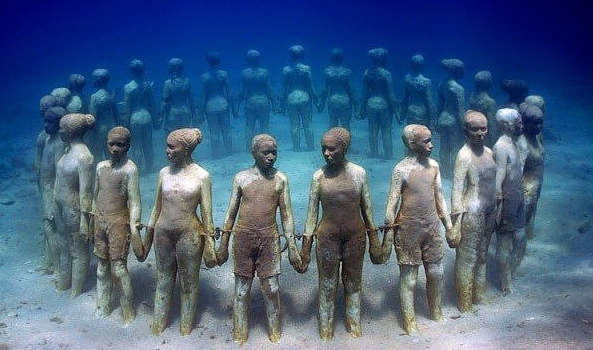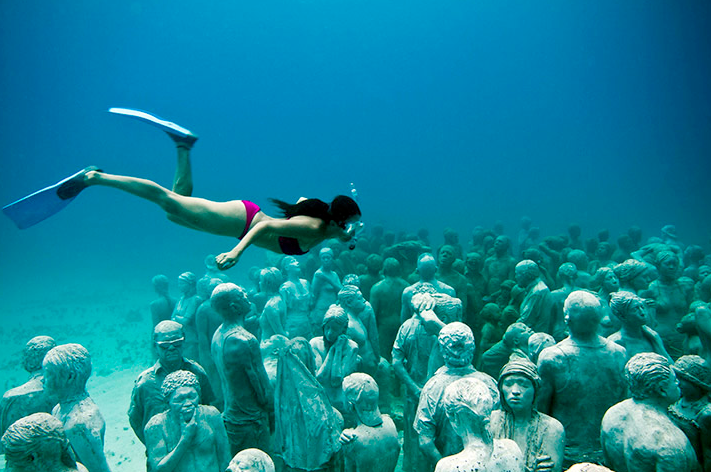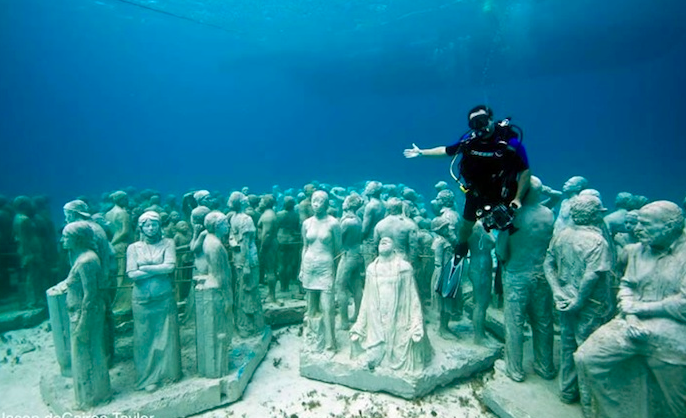With four-hundred life-size submerged sculptures, this finished stage two of the earth’s hugest underwater museum, was situated within the gorgeous Cancun waters.

Located within Punta Nizuc, the National Park welcomes around 750,000 people per year and will now be housing the impressive museum. Only days following, nearly every one of the sculptures had been submerged. The housewarming they got by Nature was incredible, with many circling Gray Angel fishies, that have been rarely spotted in the Manchones region.

The primary gallery will be formed by four-hundred life-sized figures, based upon real individuals. Its structure needed eighteen months of difficult labor, one-hundred and twenty cement tons, four-hundred silicone kilograms, 3,800 fiber glass, over one-hundred and twenty submarine working hours, and the dedication and effort of a team that had a dream which started nearly a couple of years before.
This technique, created by a sculptor and artist, permits the development of life-sized figures which keep all the models’ unique positions and gestures. The process of sinking to over ten meters deep will consist upon putting the sculptures beyond a two ton base, that’ll be safely positioned upon the rocky surfaces to prevent any damage from waves. This Underwater Museum could be enjoyed not just from underneath the sea, but every piece is placed in such a method that the human eye can seen it from a clear blue sky.

The initial sinking began on November 14, 2009. Within this project’s initial stage and underneath the authority of Jason deCaires Taylor, artist and sculptor, the three sculptures had been submerged: “La Jardinera de la Esperanza” (The Gardener of Hope), Man on Fire (“Hombre en llamas”), and Dream Collector (“Coleccionista de Sueños”). The sculptures were situated nearby to these reefs and nearby to the marine habitats to develop the ecosystem which assists in maintaining reefs and corals within the conditions that were ideal.
This project will be backed by its Nautical Association as well as the Ministry of Environment and has needed the investment of over $350,000, to permit the reefs surrounding these sculptures, to stay untouched. That’s why Marine Park was ready for the challenge and created a method to deviate the visitors from these habitats, via reefs, without needing to lose its tourists as well as the $36 million these represent within yearly income.

